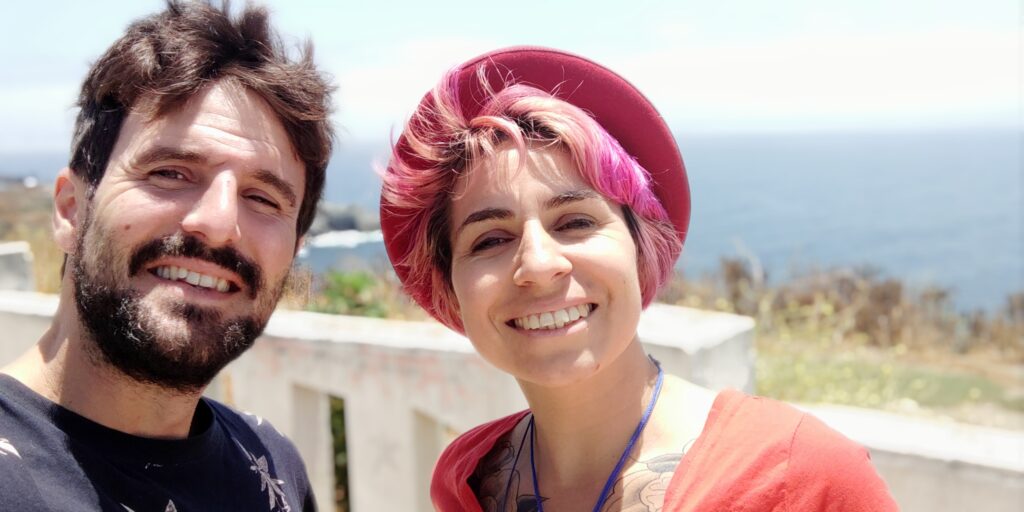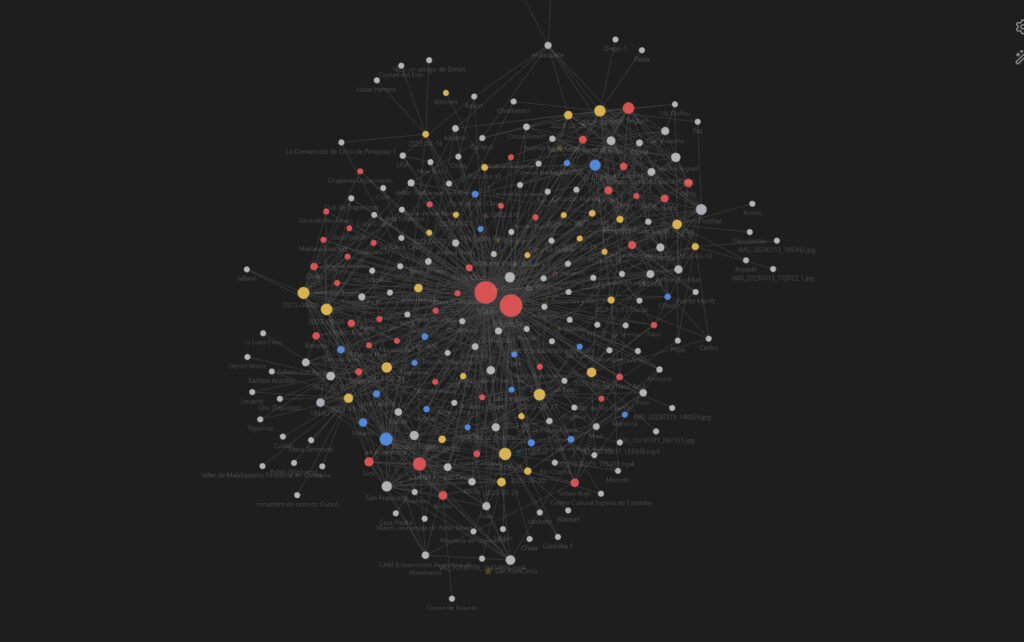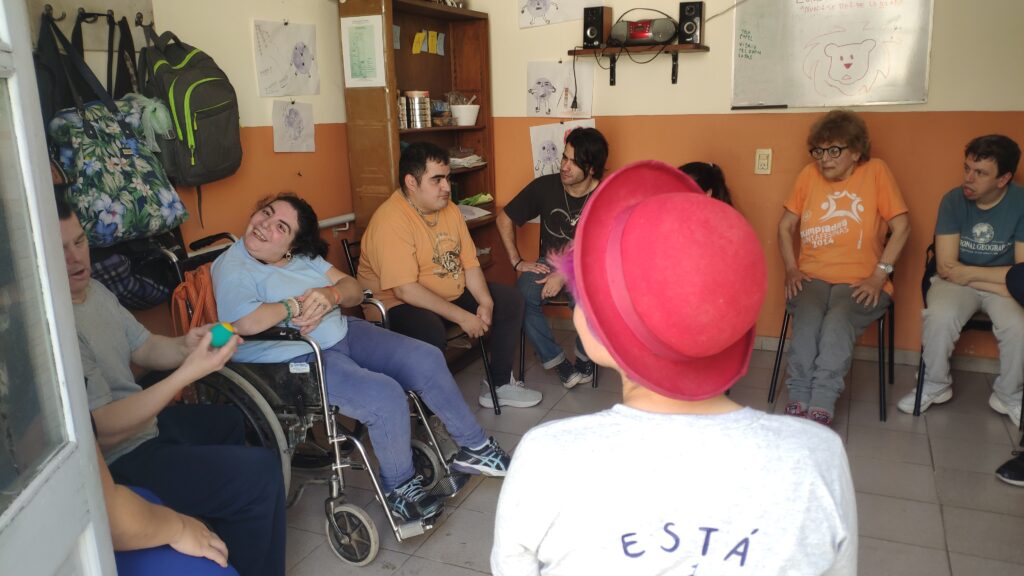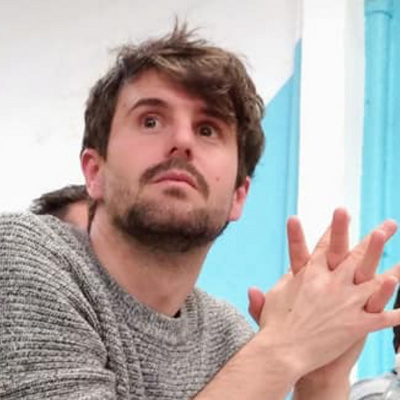Está Pasando, Year One: A Journey of Lessons and of Happenings
Envisioned as a journey to document the interconnected Latin American circus network, the Está Pasando (“It’s Happening”) project’s path has been less straightforward than its creators originally envisioned… which only makes its findings that much more fascinating. Miguel Manzano recounts what he has learned in his first year mapping the Latin American circus.
Looking back, it’s been a little over a year since the Está Pasando project began. Luckily, CircusTalk gave me the opportunity to explain the original idea, which you can read here. And I say “luckily” since like any good idea it has mutated, it has matured, it has adapted to reality. We have gone through unforeseen events, opportunities, and even coup attempts.
In one year we have traveled more than 15,000 km by van, by bus, and by train. Also by boat, by the way. Now I write this from the Madrid airport after taking a flight from Chile, knowing that it is time to recap. And, what better way than to do it with you? A year gives a lot of learning. Impossible to summarize in words. But I’ll do my best.
Everything changes (all the time)

A year ago, I shared this image with CircusTalk. It was the image of the project, which I used to rejoice in the adventure that was to come. As I imagined then, the project would last just over a year. Two at most. We would travel along the coast of South America to Colombia (Phase 1) and there we would decide whether the project would continue or not (Phase 2).
I landed in Buenos Aires at the end of October 2022. From there I went to the Uruguay Circus Convention, and when it ended, I went to La Plata to visit an old friend. Then to Rosario, to another circus convention. From there to Cordoba and then the Valpo Circo festival in Valparaiso. Once in Chile, we were able to spend time adapting our van, “La Cósmica,” which we had bought from a Chilean clown. I say “we could,” plural, because we are doing this project between Josefa Iskándara, a Chilean juggler, and me.

By December we had everything almost ready to start the trip: cross the Atacama Desert, go to the Sacred Valley in Cusco and from there continue climbing. We had many things to do in Lima. But on December 7, 2022, there was an attempted coup in Peru, and that led to the closure of the land borders as there were riots in the southern part of the country. Especially in Cusco.
The month of December passed. We took the opportunity to fix some ofLa Cósmica’smechanical issues, but the borders were still closed. So we decided to adapt to the situation by making time to go down to the Sur Circo festival in Frutillar. You can read the full story here. Furthermore, taking advantage of the fact that we were in the area, we organized a functional juggling seminar in Chiloé, which allowed us to meet the new traditional circus of the Castro Brothers. Meanwhile, Marcelo Troncoso was carrying out the Dimensions of Juggling in Chile documentary series, which we were able to complete with the support of CircusTalk.
Without our realizing it, summer passed, which in the Southern Hemisphere is during the months of December, January, and February. It started to get very cold in the south of Chile, so we decided to go to Paraguay for the circus convention. It would surely be hot there.
Hang on a minute. Go to Paraguay… from southern Chile. That’s about 2000 miles.
Spoiler: we didn’t make it.

La Cósmica crossed the Andes without problem. Once in Argentina, it broke not once. Not twice. Not three. Not four. Not five times. Six, maybe. At the fifth time, I stopped counting. Luckily the circus community is huge, and there are so many traveling people who helped us at every step—in every situation—that what could have been horrible became an opportunity to learn about other ways of doing circus. From lost towns to large cities. Now I’ll tell you this part.
After more than five months of repairing our van in Argentina, we were able to return to Chile to participate in the InternationalCongress of Juggling and Circus Arts (CIMAC), where we had been invited to give some workshops. Then we took the opportunity to participate in theChilean National Circus Convention.
And now, after a year, I no longer measure time in days, but in kilometers, and that first map I showed you at the beginning of this article looks more like this:
So, to conclude this first chapter, I would tell you that everything—absolutely everything—changes. This is true when you travel, but it is just as true even if you think your life is stable, calm, and routine. Everything changes. The person who started reading this is not the same person who is reading it right now, seconds later. Your motivations today are not the same as those of next week. What is a goal today, tomorrow will be a means or a frustration, who knows? But everything changes, all the time.
This year I’ve learned that making plans is okay if that’s what I need to get up and get going. But once you’re on the plan, you have to assume that everything will change. In fact, that is the plan: to adapt to each step.
“It’s not a project, it’s happening.”
This phrase is based on one I heard from Iskándara. It was her reflection, which gave me a lot to think about.
We artists always think about projects. Our natural state is to make projects, present them, wait for them to be successful, and then prepare another project. At least in Spain, it is like that. In Latin America, too.
When I talked about the Está Pasando “project” before starting the trip, that made sense, because I was referring to something I would do in the future. Yet even once we had been traveling for months, I continued defining Esta Pasando as “a mapping project of the Latin American circus.”
But now it wasn’t something I was going to do in the future: it was my daily life. It was what I had dedicated myself to. It was no longer a plan on paper. However, what was it?What is it?
If I try to explain it using architecture as a simile, an architectural “project” refers to the initial phase: design, proposal, budget, technical reports, and an execution plan. But once construction begins, we already talk about “work.” Once the construction is finished, we now call it a “building.”
In the arts, it can be something similar, since “obra” in Spanish refers to a performance work. “A play.”
But what is this thing we are doing? Traveling thousands of kilometers through South America, looking for the people who support the circus community in their respective cities, interviewing them and giving visibility to the Latin American circus network as a whole.

It is not a scenic work, because there is no clear beginning. There is no public that pays us an entrance fee. There is no end. We just started doing it and have adapted, as I said before. At this moment, we have interviewed more than 60 people, and we have been able to collaborate on dozens of circus “projects”: schools, cooperatives, social centers, festivals, conventions, variety shows.
There it is. I used the word “projects” again. What are they if not all these ways of performing circus? They are happening. They are already something concrete and in operation. They are not projects, but I don’t know what the word is that defines them. Therefore, as I find it, I can only conclude that the word is “circus.”
It’s happening.
The new circus family
I don’t know if this was a coincidence, but during this year of travel, we have been guests of many families with children. They were usually circus performers, managers, teachers, clowns, or even gurus between 25 and 40 years old, who were raising children.
One of the most powerful learnings I have taken away from this journey is that there are other ways of parenting beyond stereotypes and “shoulds.” What I have encountered have been people who do not treat their children as if they were their property, but rather, as free and complete human beings who have coincidentally fallen under their care and accompaniment. Always starting from love, but respecting independence. With rules, yes; but always from the negotiation. From equality and respect.

Maybe that’s something that can be seen beyond the circus; I’m not an expert on the subject. I found it on this trip, in these places, with these people. All of them related to circus.
But I found it fascinating to see this common axis of parenting that was repeated across thousands of miles of distance, between families who did not know each other at all but who approached parenting in very similar ways.
One of those people told me that the key was to try and bring out the essence of the person in the purest way possible. Accompanying her throughout her process, while also learning from her. Seeing through their eyes and their questions; recognizing the wisdom of innocence; taking advantage of the chance to witness the process of learning how to be a person.
Being itinerant
I have always been itinerant. Even in my own city. I have always been on the go, doing projects everywhere. Now I am itinerant in the strictest sense of the word. I am always on the move, traveling thousands of miles, looking for stories. Connecting knowledge.
Traveling is very cliché. It is a spectrum that goes from tourism to migration, and makes you think about what separates them. But beyond the clichés, traveling can be frenetic or restorative, and it all depends on the speed.
Álvaro Neil, a clown who went around the world on a bicycle, says that the optimal speed for traveling is that of the bicycle. Because a plane takes you from one place to another, which is more than a trip, it is teleportation. And a car is too fast to process the nuances of the landscape (the smells, the temperatures, the people). Walking is too tiring, and turns trips into pilgrimages. But the bicycle is the best way: you can be as fast as your body allows you and, at the same time, you can stop or slow down if something seems interesting enough.
We travel in a ’93 van, which has taught us, perhaps by force, what our travel speed is. Our enjoyable speed. That has caused this trip which was planned to last a year to be extended for the necessary time until we have concluded it. The challenge is maintaining the right speed to make it enjoyable. To convert milestones into chapters and not checkpoints.
Being itinerant has also taught me one of the great lost roles of the circus: the cross-pollination of ideas.
Circuses have always been places that transmit knowledge, imagination, and novelty. Part of its success was taking discoveries, gadgets, and ideas to the most remote places. Then, with the gradual development of information infrastructures (from roads to the Internet), that role fell into irrelevance. There were other, much more efficient ways to stay informed.
Paradoxically, today there is so much information that it is almost impossible to process it. So, with our Functional Juggling seminars as well as our reflections, vision, and experience, we transform (and allow ourselves to be transformed by) the lives of the people we come across, with whom we share conversations, reflections, performances, meals. Home.
I like to imagine myself as a postman of the reflections that we accumulate after hundreds of conversations about different ways of doing circus. There is always someone who makes us see things in ways we never imagined.

Other ways of doing circus (although it may not seem like it)
All this connects me to both what the two of us do as well as with the previous reflection on this “project.” We are doing circus, yes. Iskándara has a juggling act with hats that she has presented at each of the festivals, conventions, and varietés that we have been through. After a long time behind the scenes, I also took advantage of the trip to be able to go on stage with an acrobatic act.
But that’s just part of what we do. It is a means, not an end. This trip is not about going out on stage.
We also hold seminars on functional juggling, acrobatics pedagogy, and games for circus teachers. But that doesn’t explain everything we do, either: activities in therapeutic centers, conferences, interviews, social networks, research, cultural management, architecture and set design, applications for international funds.
A swarm of possibilities to make circus is what we are doing. We are investigating and opening new paths. Because, luckily for the circus, it is an expanding sector in which everything fits.
And I think that’s precisely what it’s about.
To use all the resources at our disposal to expand the boundaries of what the circus is supposed to be. To make it more. More inclusive, more creative, more versatile, safer, even more difficult.
Sharing, collaborating, being

I could go on, because a year like this cannot be summarized in an article. Maybe in a book; we’ll see. But I am going to close on this reflection that I wanted to share with you, CircusTalk subscriber.
A year ago I started an adventure that never turned out to be what I imagined. But the “would-have-been” does not exist, so what has been is the best possible version of things. Because it was. Any other possibility did not come to be, so it is directly much worse.
This year I have walked thousands of trails that I never thought I would tread. I’ve heard birdsong I’ve never seen and eaten fruits I didn’t know existed. I have met incredible people who have given me everything, without knowing me, because that is simply who they are.
I have seen impossible tricks. Dangerous. Amazing.
I laughed. I’ve been bored. I’ve gotten frustrated, a lot. I have also learned to tolerate myself. Traveling with yourself is not always easy.
I have slept in so many different houses that I lost count. I have been bitten by bugs, I have lost dogs that were in my care, I saved a lizard, I learned to play an instrument, I fell in love.
It wasn’t perfect. Not at all.
But it was. And it still is. Because just as it is not clear when it began, it is also not clear when it will end.
For now we will continue our journey. I share the new map with you, but you don’t have to take it literally. More than a map, it is a declaration of intentions. I will do everything I can to see it through.
No more, no less.
This has been the first year of It’s Happening.
We continue.

Images shared by Miguel Manzano and the Esta Pasando project. Main image: Miguel performing....
Do you have a story to share? Submit your news story, article or press release.





